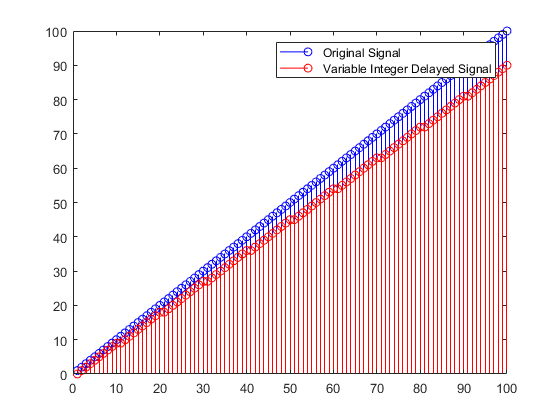dsp.VariableIntegerDelay
Delay input by time-varying integer number of sample periods
Description
Thedsp.VariableIntegerDelay系统对象由时变intege™延迟输入r number of sample periods.
To delay the input by a time-varying integer number of sample periods:
Create the
dsp.VariableIntegerDelayobject and set its properties.Call the object with arguments, as if it were a function.
To learn more about how System objects work, seeWhat Are System Objects?
Creation
Description
vid= dsp.VariableIntegerDelayvid, that delays discrete-time input by a time-varying integer number of sample periods.
vid= dsp.VariableIntegerDelay(Name,Value)
Properties
Usage
Syntax
Description
vidOut= vid(input,d)dsamples, wheredshould be less than or equal to the value specified in theMaximumDelayproperty and greater than or equal to 0. Delay values outside this range are clipped appropriately and non-integer delays are rounded to the nearest integer values. Each column of the input is treated as an independent channel
Input Arguments
Output Arguments
Object Functions
To use an object function, specify the System object as the first input argument. For example, to release system resources of a System object namedobj, use this syntax:
release(obj)
例子
Algorithms
This object implements the algorithm, inputs, and outputs described on theVariable Integer Delay(Simulink)block reference page.

